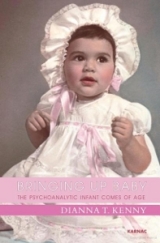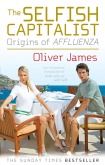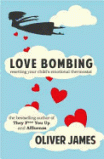Migration and its vicissitudes
The life cycle
The life cycle is an important framework that has been used and can be used by different theoretical perspectives and from various disciplines. The concept ‘life cycle’ was developed by Erik Erikson, in terms of chronological phases from infancy onwards, connecting the emotional and biological development of the individual and socio-cultural factors.
The psychoanalytic perspective focuses on the chronological age of the individual and his/her emotional development. From birth onwards the individual is expected to develop in order to deal with emotional and biological changes and external needs and pressures. The life cycle allows
horizontal and vertical exploration of the individual’s present situation: the individual’s history (vertical) and their present emotional state (horizontal) and, in addition, the external and internal pressures coming from families, friends and socio-cultural contexts.
We decided to use the life cycle in our books on Trauma and Migration as we considered there to be significant differences at each stage of the life cycle. From birth onwards the individual is never alone or in total isolation; what is digestible by some may not be by others. To come to grips with the vicissitudes of life requires the capacity to work through the various stages of the life cycle. We wanted to draw attention to the complexities of these issues.
From a psychoanalytic perspective, the early years and early development in terms of attachment and separation are especially important in relation to future developments. How they are worked through will affect future developmental stages and conflicts. We have used an object relations approach developed by Melanie Klein and her followers, but we also stressed the importance of different contributions from a psychodynamic perspective. We also are aware that there are different ethnic, cultural, social and gender contexts which have an effect on the various phases of the life cycle. It is important to be aware of these contexts and their effect on the patient and on the therapist.
The theory of the Oedipus complex was developed by Freud, who considered it central in exploring and understanding the mind’s functioning. I want to underline the importance of exploring the variations of the Oedipus complex at different stages of the life cycle.
It is well-known that emotional difficulties or trauma in early childhood tend to be reactivated and affect the individual’s capacity to work through stresses that may appear at later stages of the life cycle. As I mentioned above, it is important to locate the stage of the life cycle when the individual is experiencing considerable anxieties or stress due to some form of migration or trauma, because the meaning of what is happening and how it is happening can be significantly different according to that stage.
Each stage confronts the individual with significant changes and often activates stress and anxiety. Basically, these stresses refer to conscious or unconscious awareness about the individual’s own life, in terms of biological, emotional and interactive situations. Of course there are external situations in life, and some quite stressful ones, and all of them can reactivate oedipal anxieties in a very intense way.
It is also important to emphasise that men and women will have different symptoms and responses to trauma and stress, due to the biological and psychological differences between them. There are changes in their bodies, and in their lives according to external and internal expectations, which are affected by their emotional development and social and ethnic and religious backgrounds. For instance, an Asian adolescent living in the Eastern world will have a very different experience from an adolescent from the Eastern world living in an Asian country. All this suggests a multiplicity of factors that activate and shape different aspects of the life cycle from birth to death.
Internal and external migration
The Bible refers to the first migration, when Adam and Eve were seduced by the tree of knowledge. When their eyes were opened, they were able to see that the materials that make up life are good and evil. Their acquired knowledge had a high price: leaving Paradise. ‘Paradise’, meaning that everything is provided in terms of goodness and pleasure.
Life confronts us with migration from birth to death. We can say that the baby inside the womb lives in a different world. It is a habitat that resembles a paradise where everything flows without an effort. To be born is to enter a world of early attachments and frustrations that require external and internal help to work through. Therefore, we can consider that the first migration occurs when the baby is born. Coming out of the womb is a form of migration into a different world. Of course we sometimes long for a ‘paradise experience’ and on some occasions individuals can recreate illusions or delusions in which some form of paradise can be re-installed.
We can define migration in everyday language as a forced or voluntary move whereby the individual changes his or her habitat. How he/she leaves, lands, or is received play an important part in a successful outcome.
Migration is a complex phenomenon and I focused on certain aspects that I consider important from a psychoanalytic perspective. I consider migration from a dual perspective: the external change of habitat and the internal change of habitat or mental change. This mental change is connected to the vicissitudes that the external change brings about, but I also suggest that the concept of internal migration can be applied to the emotional conscious and unconscious changes and its vicissitudes associated to development. Internal migration is very much linked to different aspects of the Oedipus complex and when we consider a successful internal migration we are referring to the ability to work though the anxieties aroused by the Oedipus complex.
As I mentioned, to locate internal migration at different stages of the life cycle is important; especially if we want to find out its meaning and how they affect the individual’s capacity to deal with them.


‘At present, it has been estimated that over 200 million people are considered to be migrants. The reasons for having left their homes are wide-ranging: escaping from war, persecution, discrimination and exploitation, at one extreme; seeking better living conditions and opportunities for work, at the other. Some migrants end up having to perform jobs that are dirty, dangerous and degrading. For others, migrating can become a positive and creative experience, contributing to the economic growth of the new country and enriching societies through cultural diversity. In all cases, the changes profoundly affect individuals, couples and families.
Varchevker and McGinley have put together a collection of papers dealing, not only with external migration, but also with the consequences of internal migration. The individual’s life cycle is here used as a valuable frame for the understanding of those changes and their sequels. From a broad psychoanalytical perspective, the different authors included in this book describe the multiple problems presented by migration in its complex contemporary dimension.’
– Gregorio Kohon, Fellow and Training Analyst, The British Psychoanalytical Society














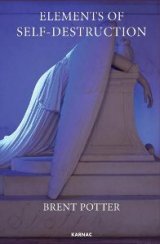
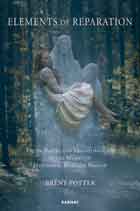
 onplace of child psychology that in the earliest stage of life an infant and his mother cannot be seen as two separate individuals, but rather as a single unit, or dual unity, as Mahler (1963) calls it (Mohacsy, 1976, p. 501).
onplace of child psychology that in the earliest stage of life an infant and his mother cannot be seen as two separate individuals, but rather as a single unit, or dual unity, as Mahler (1963) calls it (Mohacsy, 1976, p. 501).